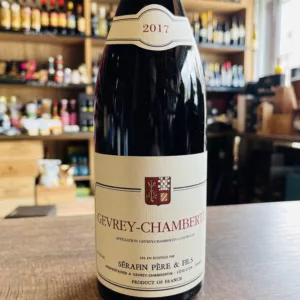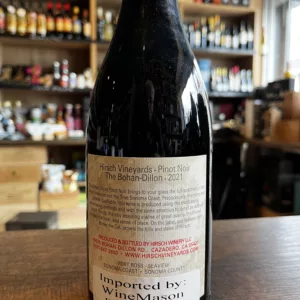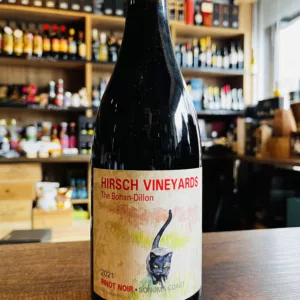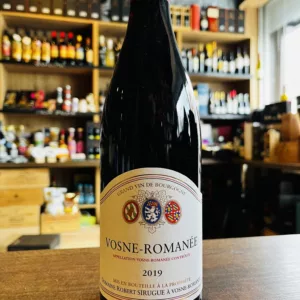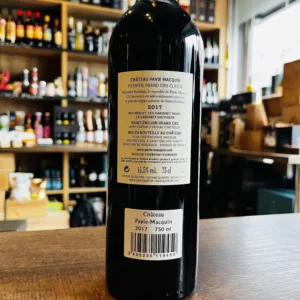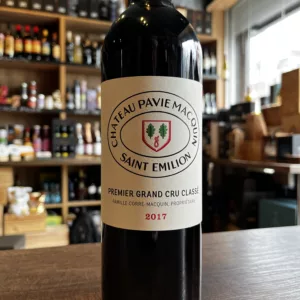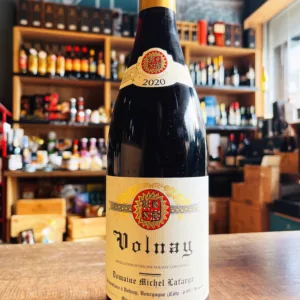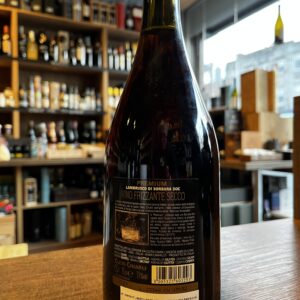-

 This wine comes from the very poor granit wineyard of Saint Hippolyte. The terroir is made of the degradation of the grey granit of Thannenkirch, light, white, sandy, poor and extremely dry. The growing of the vine is limited, and it must invest quickly in the maturation of the fruits. This is why this wineyard is one of the earliest in Alsace.
This wine comes from the very poor granit wineyard of Saint Hippolyte. The terroir is made of the degradation of the grey granit of Thannenkirch, light, white, sandy, poor and extremely dry. The growing of the vine is limited, and it must invest quickly in the maturation of the fruits. This is why this wineyard is one of the earliest in Alsace. -
 The Marquises Incisa della Rocchetta are among the protagonists of Italian history, from the early Middle Ages to the dawn of the Baroque age and beyond. Mario Incisa della Rocchetta was born in Rome in 1889 into a Piedmontese family, studied agriculture in Pisa and immediately cultivated a strong inclination for agronomy, with the dream, already in the 1920s, of finding perfection in agriculture and respecting Earth. He moved to Maremma in the 1940s after marrying Clarice della Gherardesca in 1930, a descendant of one of the oldest families in Tuscany, that of Count Ugolino sung by Dante in the Divine Comedy. The Marquis immediately understood that it was one of the most extraordinary biotypes of Mediterranean Europe and began to experiment with some French vines, concluding that cabernet, in fact so far from the Tuscan and Piedmontese tradition of Sangiovese and Nebbiolo respectively, "has the bouquet I was looking for." This is how, thanks to the first scions received from the Salviati Dukes of Migliarino (near Pisa), he planted the first cabernet sauvignon vineyard in the land that slopes down from the Castiglioncello fortress to the sea, in the early 1940s. We know , in reality, that alongside cabernet (sauvignon and franc), the vines used in the first planting were various and ranged from canaiolo to ciliegiolo to white grape vines. The mass selection, oriented towards the sole use of cabernet sauvignon, arrived in a more recent era between 1960 and 1968. Mario had sensed an extraordinary similarity between his lands in Bolgheri and the Graves region in Bordeaux, due to a mainly gravelly and pebbly soil, mixed with clay, very favorable for the production of great reds. From 1945 to 1967 Sassicaia remained a strictly private product, reserved for family and friends. The first vintage to appear on the market was 1968. The ancient and splendid land that Clarice della Gherardesca receives as an inheritance is a Mediterranean park stretching between the hill of the hermitage-fortress of Castiglioncello and the coast of dunes and marshes. A 2,500 hectare property in the heart of Maremma which extends over an area of 13 kilometers from the hill to the sea and runs along the famous cypress avenue. The soils, partially clayey, located at an altitude between 60 and 400 meters above sea level, with exposure to the west/southwest, show different and composite morphological characteristics, with a strong presence of limestone areas rich in alberese, of gabbro and stones. The climate has its own peculiarity: the embrace of hills that extends from Bibbona to Castagneto protects the vineyards and olive groves from north-east winds, while in summer this corridor is refreshed by sea breezes. The energy and light of the sun is reflected on the sea, irradiating the hills which in turn retain the sea breeze and generate refreshing humidity. The woods, dense and uncontaminated, constitute an extraordinary natural lung. This is the microclimate that characterizes Tenuta San Guido An area that deserves its own appellation: DOC Bolgheri Sassicaia. This isn't just tasting good wine, is creating good memories.
The Marquises Incisa della Rocchetta are among the protagonists of Italian history, from the early Middle Ages to the dawn of the Baroque age and beyond. Mario Incisa della Rocchetta was born in Rome in 1889 into a Piedmontese family, studied agriculture in Pisa and immediately cultivated a strong inclination for agronomy, with the dream, already in the 1920s, of finding perfection in agriculture and respecting Earth. He moved to Maremma in the 1940s after marrying Clarice della Gherardesca in 1930, a descendant of one of the oldest families in Tuscany, that of Count Ugolino sung by Dante in the Divine Comedy. The Marquis immediately understood that it was one of the most extraordinary biotypes of Mediterranean Europe and began to experiment with some French vines, concluding that cabernet, in fact so far from the Tuscan and Piedmontese tradition of Sangiovese and Nebbiolo respectively, "has the bouquet I was looking for." This is how, thanks to the first scions received from the Salviati Dukes of Migliarino (near Pisa), he planted the first cabernet sauvignon vineyard in the land that slopes down from the Castiglioncello fortress to the sea, in the early 1940s. We know , in reality, that alongside cabernet (sauvignon and franc), the vines used in the first planting were various and ranged from canaiolo to ciliegiolo to white grape vines. The mass selection, oriented towards the sole use of cabernet sauvignon, arrived in a more recent era between 1960 and 1968. Mario had sensed an extraordinary similarity between his lands in Bolgheri and the Graves region in Bordeaux, due to a mainly gravelly and pebbly soil, mixed with clay, very favorable for the production of great reds. From 1945 to 1967 Sassicaia remained a strictly private product, reserved for family and friends. The first vintage to appear on the market was 1968. The ancient and splendid land that Clarice della Gherardesca receives as an inheritance is a Mediterranean park stretching between the hill of the hermitage-fortress of Castiglioncello and the coast of dunes and marshes. A 2,500 hectare property in the heart of Maremma which extends over an area of 13 kilometers from the hill to the sea and runs along the famous cypress avenue. The soils, partially clayey, located at an altitude between 60 and 400 meters above sea level, with exposure to the west/southwest, show different and composite morphological characteristics, with a strong presence of limestone areas rich in alberese, of gabbro and stones. The climate has its own peculiarity: the embrace of hills that extends from Bibbona to Castagneto protects the vineyards and olive groves from north-east winds, while in summer this corridor is refreshed by sea breezes. The energy and light of the sun is reflected on the sea, irradiating the hills which in turn retain the sea breeze and generate refreshing humidity. The woods, dense and uncontaminated, constitute an extraordinary natural lung. This is the microclimate that characterizes Tenuta San Guido An area that deserves its own appellation: DOC Bolgheri Sassicaia. This isn't just tasting good wine, is creating good memories. -

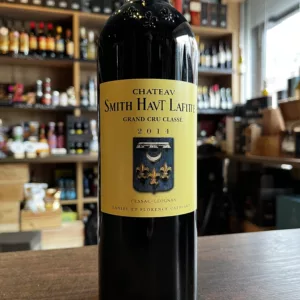 The vines of Château Smith Haut Lafitte are planted in a single block on a Günz gravel plateau in the Pessac-Léognan appellation, producing six different wines. Château Smith Haut Lafitte, a Graves Great Growth in both red and white, and our two second wines Les Hauts de Smith and Le Petit Haut Lafitte, also in red and white. Each has its own unique blend and distinctive aromatic profile.
The vines of Château Smith Haut Lafitte are planted in a single block on a Günz gravel plateau in the Pessac-Léognan appellation, producing six different wines. Château Smith Haut Lafitte, a Graves Great Growth in both red and white, and our two second wines Les Hauts de Smith and Le Petit Haut Lafitte, also in red and white. Each has its own unique blend and distinctive aromatic profile. -
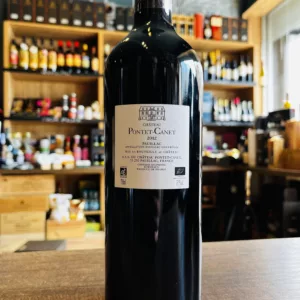
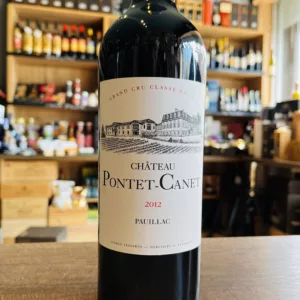 Designated a Fifth Growth in the 1855 Classification, Pontet-Canet has exceeded that classification for many years now and is considered one of the top wines of Bordeaux. Of the 120 hectares (300 acres) With 200 acres under vine, the estate of Pontet-Canet is located in the northern end of the Pauillac commune, across the road from first growth Chateau Mouton Rothschild. The soil composition is mainly gravel over a subsoil of clay and limestone. A wine of real class, pedigree and distinction, the 2012 Pontet-Canet is absolutely gorgeous. The flavours are beautifully nuanced and delineated throughout. The 2012 is decidedly understated next to some other recent vintages, but the magic of this site simply won't be denied.
Designated a Fifth Growth in the 1855 Classification, Pontet-Canet has exceeded that classification for many years now and is considered one of the top wines of Bordeaux. Of the 120 hectares (300 acres) With 200 acres under vine, the estate of Pontet-Canet is located in the northern end of the Pauillac commune, across the road from first growth Chateau Mouton Rothschild. The soil composition is mainly gravel over a subsoil of clay and limestone. A wine of real class, pedigree and distinction, the 2012 Pontet-Canet is absolutely gorgeous. The flavours are beautifully nuanced and delineated throughout. The 2012 is decidedly understated next to some other recent vintages, but the magic of this site simply won't be denied. -
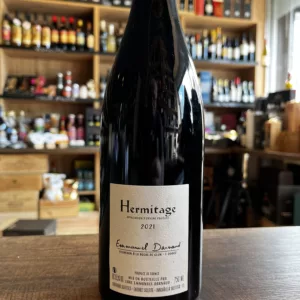
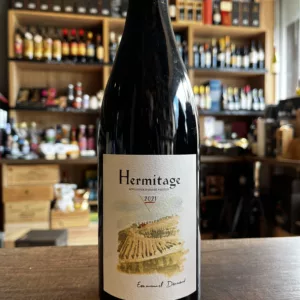 Enthusiastic Emmanuel produces polished, generous wines at his winery in La Roche de Glun, sitting on a peninsular which cleaves the Rhône river. His focus is displaying individual expressions of each parcel. They are picked and vinified separately before being placed in wooden casks, vats or larger demi-muids to continue their élevage
Enthusiastic Emmanuel produces polished, generous wines at his winery in La Roche de Glun, sitting on a peninsular which cleaves the Rhône river. His focus is displaying individual expressions of each parcel. They are picked and vinified separately before being placed in wooden casks, vats or larger demi-muids to continue their élevage -
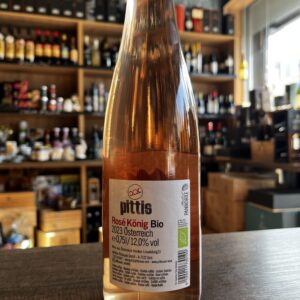
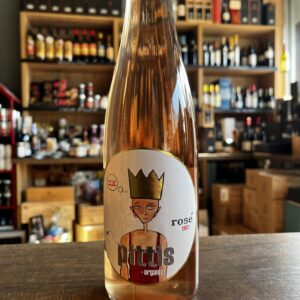 There is a simple and honest feeling in the wine and spirit of Gerhard Pittnauer which hails from his generosity and humility. Given the reins of his vineyard in the mid-1980’s after the unexpected death of his father, Gerhard, then 18 years old, had to train himself to make wine in the midst of scandal and chaos in the Austrian wine market. He chose to become a student of the broader wine world, and, in realizing the exceptionality of the land he farmed and of the indigenous grapes of the region, allowed himself to experiment with some missteps until he found his thesis. He set forth to ‘grow’ wine rather than to ‘make’ it in the cellar, from the autochtone varietals. He did so without any viticultural doctrine until he found that there was a consistent, common thread in the wines he loved to drink from France and elsewhere. If, he thought, these wines were amazing because of biodynamics, then he must do the same to achieve the pinnacle in his own wine. So he tends 15 hectares, half of which he owns and half of which he rents, alongside his wife Brigitte to create what they call living wines. All work is done manually from composting to pruning. There is no calendar that drives them. Nothing is rushed: they believe in quality over speed. They taste for perfect ripeness, select the cleanest grapes, and begin the wine in the cellar in response to the conditions of the vintage. They do incorporate a bit of modern technology: a pneumatic press, temperature-controlled steel tanks and pumps, all to ensure the purity and freshness of the fruit remains. They are making wines that excite them with the unique voice of the varietal and the deep limestone soils of the terroir speaking clearly. Gerhard and Brigitte are aware of the evolution of their tastes as well as the vineyard’s. They are students presenting the current findings. Not with proud declaration, but with excited experimental energy to get the best of what they have. So far, it is delicious research.
There is a simple and honest feeling in the wine and spirit of Gerhard Pittnauer which hails from his generosity and humility. Given the reins of his vineyard in the mid-1980’s after the unexpected death of his father, Gerhard, then 18 years old, had to train himself to make wine in the midst of scandal and chaos in the Austrian wine market. He chose to become a student of the broader wine world, and, in realizing the exceptionality of the land he farmed and of the indigenous grapes of the region, allowed himself to experiment with some missteps until he found his thesis. He set forth to ‘grow’ wine rather than to ‘make’ it in the cellar, from the autochtone varietals. He did so without any viticultural doctrine until he found that there was a consistent, common thread in the wines he loved to drink from France and elsewhere. If, he thought, these wines were amazing because of biodynamics, then he must do the same to achieve the pinnacle in his own wine. So he tends 15 hectares, half of which he owns and half of which he rents, alongside his wife Brigitte to create what they call living wines. All work is done manually from composting to pruning. There is no calendar that drives them. Nothing is rushed: they believe in quality over speed. They taste for perfect ripeness, select the cleanest grapes, and begin the wine in the cellar in response to the conditions of the vintage. They do incorporate a bit of modern technology: a pneumatic press, temperature-controlled steel tanks and pumps, all to ensure the purity and freshness of the fruit remains. They are making wines that excite them with the unique voice of the varietal and the deep limestone soils of the terroir speaking clearly. Gerhard and Brigitte are aware of the evolution of their tastes as well as the vineyard’s. They are students presenting the current findings. Not with proud declaration, but with excited experimental energy to get the best of what they have. So far, it is delicious research. -
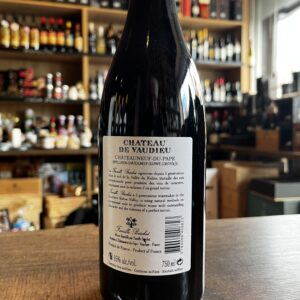
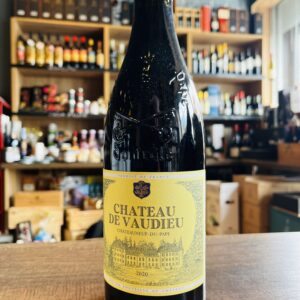 The Château de Vaudieu, an 18th-century historic estate located in the stunning region around Châteauneuf-du-Pape, has been with the Bréchet family for over five decades. Laurent Bréchet, the founder's grandson, is in charge of the estate. The name ‘Vaudieu’ is derived from ‘Vallée de Dieu’, meaning ‘Valley of God’, a nod to the area's picturesque landscape.
The Château de Vaudieu, an 18th-century historic estate located in the stunning region around Châteauneuf-du-Pape, has been with the Bréchet family for over five decades. Laurent Bréchet, the founder's grandson, is in charge of the estate. The name ‘Vaudieu’ is derived from ‘Vallée de Dieu’, meaning ‘Valley of God’, a nod to the area's picturesque landscape. -
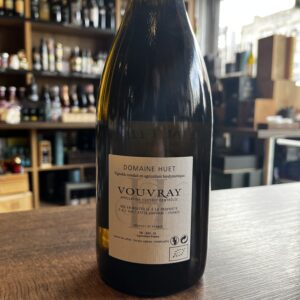
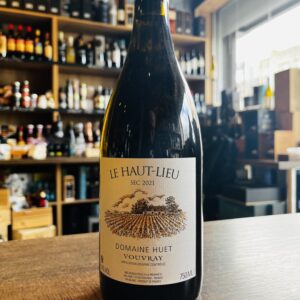 Pure, energetic and highly refined, Domaine Huet Vouvray Le Haut Lieu Sec is a fabulous Vouvray that any chenin lover should try. However, thanks to its mineral soils and the biodynamic care given to the fruit, it is certain that this wine still has a lot to give. Once you have it in your hands, age it, if you can…
Pure, energetic and highly refined, Domaine Huet Vouvray Le Haut Lieu Sec is a fabulous Vouvray that any chenin lover should try. However, thanks to its mineral soils and the biodynamic care given to the fruit, it is certain that this wine still has a lot to give. Once you have it in your hands, age it, if you can… -

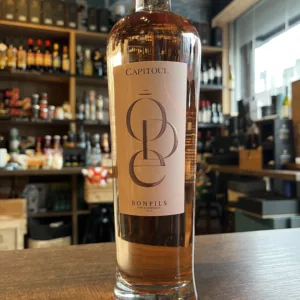 A precious Mediterranean vineyard composed of pebbles and rolled pebbles, Château Capitoul appears like a rough diamond placed on the La Clape massif. With 62 hectares of vines located at the extreme tip of the La Clape massif, its terroir. is the most maritime of the appellation Its vineyard dates back to the 14th century, when it was exploited by the cathedral of Narbonne, which gave its name to the château. In 2015 the La Clape appellation was recognized as “Grand Vin du Languedoc” , thus joining other prestigious French appellations with international renown. Capitoul - Ode can be enjoyed as an aperitif, or accompanied by tapas, a bouquet of shrimp, grilled sea bream, a vegetarian tagine or even a strawberry panna cotta.
A precious Mediterranean vineyard composed of pebbles and rolled pebbles, Château Capitoul appears like a rough diamond placed on the La Clape massif. With 62 hectares of vines located at the extreme tip of the La Clape massif, its terroir. is the most maritime of the appellation Its vineyard dates back to the 14th century, when it was exploited by the cathedral of Narbonne, which gave its name to the château. In 2015 the La Clape appellation was recognized as “Grand Vin du Languedoc” , thus joining other prestigious French appellations with international renown. Capitoul - Ode can be enjoyed as an aperitif, or accompanied by tapas, a bouquet of shrimp, grilled sea bream, a vegetarian tagine or even a strawberry panna cotta. -
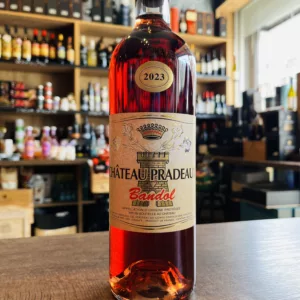 There is the appellation of Bandol with its plethora of producers, some good, some mediocre; and then there is Château Pradeaux, the unique, inimitable, standard-bearer for this ancient wine-growing district. The Château Pradeaux is situated on the outskirts of the town of Saint Cyr-sur-Mer that lies directly on the Mediterranean Ocean between Toulon and Marseilles. The estate has been in the hands of the Portalis family since before the French Revolution. The vineyards are cultivated in as natural a manner as possible with reliance on organic methods.
There is the appellation of Bandol with its plethora of producers, some good, some mediocre; and then there is Château Pradeaux, the unique, inimitable, standard-bearer for this ancient wine-growing district. The Château Pradeaux is situated on the outskirts of the town of Saint Cyr-sur-Mer that lies directly on the Mediterranean Ocean between Toulon and Marseilles. The estate has been in the hands of the Portalis family since before the French Revolution. The vineyards are cultivated in as natural a manner as possible with reliance on organic methods. -
 Sylvain Pataille is perhaps secretly one of the most important figures in Burgundy today. Beyond being a leader in organic and biodynamic viticulture, he is also a consulting oenologist for some of the most famed domaines in the region. Sylvain grew up around wine, though his family didn’t own any vines. His father was a bus driver, who spent the free time in his afternoons helping his vigneron friend Jean Fournier. Sylvain and his brother Laurent would meet their father in the Fournier vines after school, forming an attachment to the life of a vine farmer. His paternal great uncle also owned a domaine in the Médoc that the Patailles visited every summer. Sylvain knew from an early age that winemaking would be his career and he attended winemaking school in Beaune to make that dream come true. Right before graduating he was hired by a local lab as a salesperson, where he admittedly was very bad at sales. He quickly left to start his own domaine in the village of Marsannay, at the northern edge of the Côte de Nuits, while consulting on the side from contacts made during his sales days. Starting with just 1 hectare in 1999, he slowly grew his domaine to its current size of 15ha. Sylvain’s older brother Laurent, a trained oenologist himself, eventually joined the domaine in 2008, becoming Sylvain’s right hand. The domaine consists of vines across Marsannay, with a large portion planted to Aligoté, to go along with Chardonnay and Pinot Noir. Sylvain is a leading proponent of the potential of Aligoté to make world-class wines, making more than 5 different cuvées from different single sites. In the vines, he practices very low yields, ploughs by horse, and works biodynamically, earning him the reputation as one of the finest farmers in the Côte d’Or. Their typicity is that of the Côte de Nuits, and their style resemble that of their neighbouring appellations Fixin and Gevrey-Chambertin.
Sylvain Pataille is perhaps secretly one of the most important figures in Burgundy today. Beyond being a leader in organic and biodynamic viticulture, he is also a consulting oenologist for some of the most famed domaines in the region. Sylvain grew up around wine, though his family didn’t own any vines. His father was a bus driver, who spent the free time in his afternoons helping his vigneron friend Jean Fournier. Sylvain and his brother Laurent would meet their father in the Fournier vines after school, forming an attachment to the life of a vine farmer. His paternal great uncle also owned a domaine in the Médoc that the Patailles visited every summer. Sylvain knew from an early age that winemaking would be his career and he attended winemaking school in Beaune to make that dream come true. Right before graduating he was hired by a local lab as a salesperson, where he admittedly was very bad at sales. He quickly left to start his own domaine in the village of Marsannay, at the northern edge of the Côte de Nuits, while consulting on the side from contacts made during his sales days. Starting with just 1 hectare in 1999, he slowly grew his domaine to its current size of 15ha. Sylvain’s older brother Laurent, a trained oenologist himself, eventually joined the domaine in 2008, becoming Sylvain’s right hand. The domaine consists of vines across Marsannay, with a large portion planted to Aligoté, to go along with Chardonnay and Pinot Noir. Sylvain is a leading proponent of the potential of Aligoté to make world-class wines, making more than 5 different cuvées from different single sites. In the vines, he practices very low yields, ploughs by horse, and works biodynamically, earning him the reputation as one of the finest farmers in the Côte d’Or. Their typicity is that of the Côte de Nuits, and their style resemble that of their neighbouring appellations Fixin and Gevrey-Chambertin. -
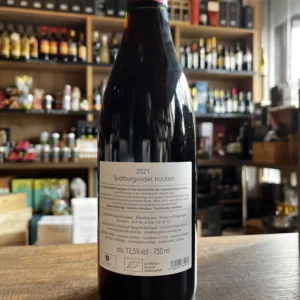
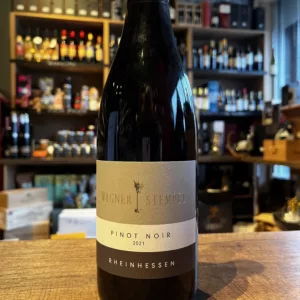 Daniel Wagner is one of the growing number of young German winemakers who are making wines of the highest quality in an area which has been overlooked for decades. He has an outstanding site in Siefersheim in the pure, weathered porphyry of the Hollberg and Heerkretz vineyards – which qualify as Grosses Gewaches or Grand Cru in the VDP classification. The estate is considered to be the leading estate in ‘volcanic’ Rheinhessen. Spätburgunder is the German name for the Burgundy grape Pinot Noir. In Wagner Stempel's organic interpretation Daniel Wagner expresses the place and time.
Daniel Wagner is one of the growing number of young German winemakers who are making wines of the highest quality in an area which has been overlooked for decades. He has an outstanding site in Siefersheim in the pure, weathered porphyry of the Hollberg and Heerkretz vineyards – which qualify as Grosses Gewaches or Grand Cru in the VDP classification. The estate is considered to be the leading estate in ‘volcanic’ Rheinhessen. Spätburgunder is the German name for the Burgundy grape Pinot Noir. In Wagner Stempel's organic interpretation Daniel Wagner expresses the place and time. -
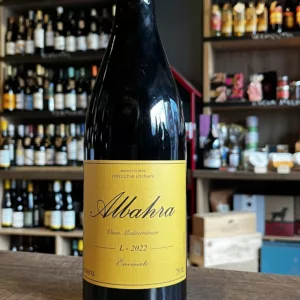 Founded in 2005, Envinate (translating as “wine yourself”) is a project between four forward-looking enology students - Roberto Santana, Alfonso Torrente, Laura Ramos, and José Martínez. They encapsulate well the new approach to winemaking taking hold in Spain which is pro Envinate are making these honest and exciting wines in four areas of Spain currently – Tenerife, Ribeira Sacra Castilla la Mancha, and Extremadura. In making these authentic wines there are a number of rules in their approach to viticulture/vinification. No chemicals are used in any of their wines, fruit is picked by hand, grapes are foot trodden, and fermentation is conducted using native yeasts from the locale. To achieve the transparency and sense of place (terroir) wines are raised in neutral oak and concrete. Sulphur is only used when absolutely necessary at the bottling stage. Albahra hails from the eastern end of La Mancha, close to Albercete. Pair with grilled vegetables, tomato based pasta dishes, or simply enjoy on its own.
Founded in 2005, Envinate (translating as “wine yourself”) is a project between four forward-looking enology students - Roberto Santana, Alfonso Torrente, Laura Ramos, and José Martínez. They encapsulate well the new approach to winemaking taking hold in Spain which is pro Envinate are making these honest and exciting wines in four areas of Spain currently – Tenerife, Ribeira Sacra Castilla la Mancha, and Extremadura. In making these authentic wines there are a number of rules in their approach to viticulture/vinification. No chemicals are used in any of their wines, fruit is picked by hand, grapes are foot trodden, and fermentation is conducted using native yeasts from the locale. To achieve the transparency and sense of place (terroir) wines are raised in neutral oak and concrete. Sulphur is only used when absolutely necessary at the bottling stage. Albahra hails from the eastern end of La Mancha, close to Albercete. Pair with grilled vegetables, tomato based pasta dishes, or simply enjoy on its own. -
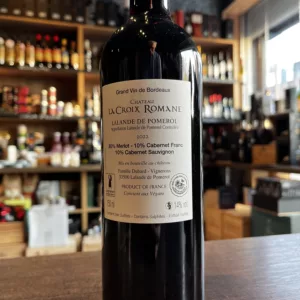
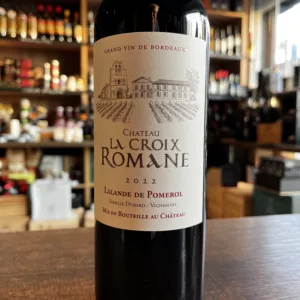 The vineyards cover an area of 8.5 ha, less than 2 km from the famous Pomerol plateau. Its sandy-gravelly soil from ancient alluvium contains more or less high proportions of clay according to the plots. At the confluence of Isle and Dordogne, the vineyards of Lalande de Pomerol benefit from the oceanic influence. The preponderance of watercourses, as well as the influence of the tides in these rivers has shaped a unique microclimate conducive to viticulture. Pair it with cold meats, red meats, grills and cheeses
The vineyards cover an area of 8.5 ha, less than 2 km from the famous Pomerol plateau. Its sandy-gravelly soil from ancient alluvium contains more or less high proportions of clay according to the plots. At the confluence of Isle and Dordogne, the vineyards of Lalande de Pomerol benefit from the oceanic influence. The preponderance of watercourses, as well as the influence of the tides in these rivers has shaped a unique microclimate conducive to viticulture. Pair it with cold meats, red meats, grills and cheeses -
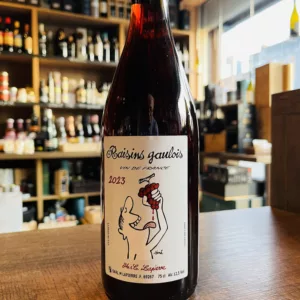 The 2023 vintage of “Raisins Gaulois” is as lively as any Lapierre has ever produced. It’s raised sulfur-free for just two months in cuve, which seems like barely enough time for fruit juice to become a wine– but that’s the whole point! Pure Gamay bottled unfiltered with a convenient screw cap and iconic label to boot.
The 2023 vintage of “Raisins Gaulois” is as lively as any Lapierre has ever produced. It’s raised sulfur-free for just two months in cuve, which seems like barely enough time for fruit juice to become a wine– but that’s the whole point! Pure Gamay bottled unfiltered with a convenient screw cap and iconic label to boot. -
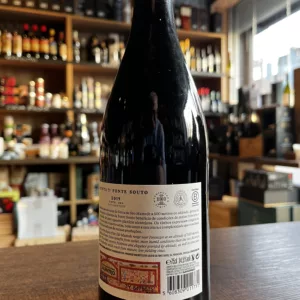
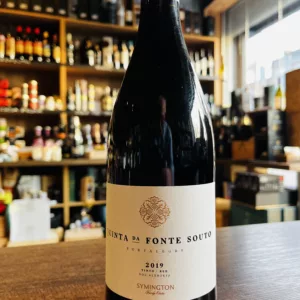 The Fonte Souto Estate red wine embodies all the strengths of the property's unique terroir. The freshness and balance afforded by the altitude; the concentration, which derives from mature, low-yielding vines, and the complexity and structure provided by the judicious combination of grape varieties. This red is built around the signature Alicante Bouschet with important contributions from Trincadeira, Cabernet Sauvignon, Syrah and Alfrocheiro.
The Fonte Souto Estate red wine embodies all the strengths of the property's unique terroir. The freshness and balance afforded by the altitude; the concentration, which derives from mature, low-yielding vines, and the complexity and structure provided by the judicious combination of grape varieties. This red is built around the signature Alicante Bouschet with important contributions from Trincadeira, Cabernet Sauvignon, Syrah and Alfrocheiro. -

 Róisín Curley is an impressive winemaker that teaches us all a good lesson on the definition of ''busy lifes''. Winemaker, Pharmacist, Micro-negotiant and a Master of Wine....Whats next? Astronaut? More to the point here, Roisin doesnt do things half way either, all of her wines are stunning, a pleasure to uncork and savor. This aligote Dore is a great example. Going up against the allmighty Chardonnay in Burgundy, doesnt stay behind and does exactly what Roisin sets it for. Elegant yet robust, Mineral, food acidity to a perfect level and a lenght that keeps reminding you that there is more to come
Róisín Curley is an impressive winemaker that teaches us all a good lesson on the definition of ''busy lifes''. Winemaker, Pharmacist, Micro-negotiant and a Master of Wine....Whats next? Astronaut? More to the point here, Roisin doesnt do things half way either, all of her wines are stunning, a pleasure to uncork and savor. This aligote Dore is a great example. Going up against the allmighty Chardonnay in Burgundy, doesnt stay behind and does exactly what Roisin sets it for. Elegant yet robust, Mineral, food acidity to a perfect level and a lenght that keeps reminding you that there is more to come


